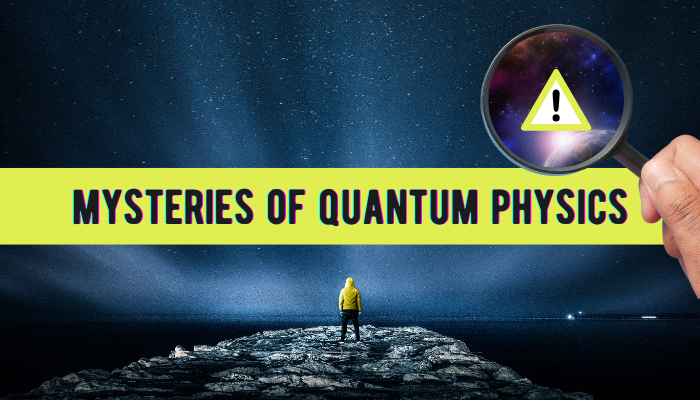For more than a century, researchers studying the tiniest particles in the cosmos have been enthralled and bewildered by the field of quantum physics. Quantum physics explores the tiny world, where particles behave in ways that are inconsistent with common sense, in contrast to classical physics, which uses precise and predictable equations to explain the larger world. The enigmas surrounding quantum physics have given rise to significant philosophical queries and technological developments that persistently influence our perception of reality.
Quantum Physics’s Inception
The early 20th century saw the limitations of classical physics, which was based on Newton’s principles, in understanding occurrences at the atomic and subatomic scales. This is when quantum physics first emerged. Max Planck presented the idea in 1900, marking the first significant advancement.
The double-slit experiment is among the most well-known studies that demonstrated the peculiarities of quantum physics. Particles, like electrons, showed an interference pattern, like waves, when they were fired at a screen through two slits. When the particles were observed, though, they acted like particles rather than waves. The concept of wave-particle duality refers to this contradictory behavior and is one of the main puzzles of quantum physics.
Wave Particle Duality: The Twofold Character of Matter and Light
The idea of “wave-particle duality” states that, depending on the circumstances of an experiment, particles like electrons and photons (light particles) can display both wave-like and particle-like characteristics. This duality contradicts our conventional intuition and is fundamental to quantum mechanics.
Quantum Superposition: Multiple States of Particles
Quantum superposition is another astounding idea in quantum physics. This concept argues that until a particle is viewed or measured, it can exist in more than one condition at once. The thought experiment known as Schrödinger’s cat, which was put out by Austrian scientist Erwin Schrödinger in 1935, is frequently used to demonstrate this concept.
A radioactive atom, a Geiger counter, a vial of poison, and a hammer are all placed inside a sealed box containing a cat in the thought experiment. The hammer will shatter the vial, unleashing the poison and killing the cat, if the Geiger counter registers radiation (from the atom’s disintegration). Quantum mechanics, however, states that until the box is opened and the cat is seen, it is both alive.
The Observer’s Role in the Measurement Problem
The measurement problem is among the most contentious and conceptually difficult topics in quantum physics. In quantum systems, this relates to the topic of how and why a measurement leads a system to “collapse” from a superposition of states into one state. Put otherwise, why does the result of quantum events appear to be influenced by observation?
Different perspectives on quantum mechanics try to solve the measurement issue. According to Werner Heisenberg and Niels Bohr’s Copenhagen interpretation, a quantum system assumes a determinate state when its wave function collapses upon measurement. But this interpretation calls into question the definition of a “measurement” and the observer’s function.
Quantum mechanics and the essence of existence
The secrets of quantum physics have a significant impact on how we see the world. The deterministic rules of classical physics give way to a universe of probabilities at the quantum level, where particles can exist in numerous states and instantly affect one another over great distances. The notion that observation influences reality throws doubt on our innate perception of reality and prompts philosophical queries concerning the essence of existence and awareness.
Additionally, the notion that there are other universes outside of our own is made possible by quantum physics. Though theoretical, the idea of parallel universes is a logical development of the many-worlds theory and implies that there may be an endless number of realities, each having its own version.
In summary
The enigmas of quantum physics cast doubt on our traditional conception of reality and present fresh opportunities for research and technological advancement. Quantum physics unveils a reality that is far stranger and more intricate than we ever could have imagined, from wave-particle duality and quantum superposition to entanglement and the measurement problem. Our understanding of the universe may be permanently altered when we explore the quantum realm and perhaps unearth even more secrets.
